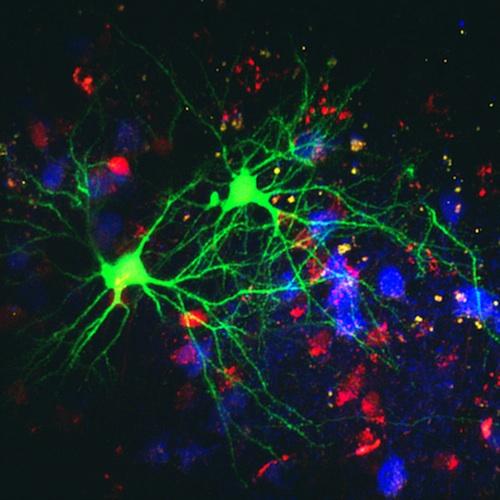
The brain circuits involved in song learning are discrete, well characterized and manipulable, providing the ability to map and dissect the circuit mechanisms underlying this naturally learned complex behavior.
Our laboratory uses several techniques to study the brain circuits involved in song learning, including longitudinal in vivo structural and functional imaging of neurons and synapses, neurophysiological recordings in head-fixed anesthetized birds, genetic manipulation of neural activity in freely behaving birds, and behavioral manipulations of auditory experience during song learning:
- We use in vivo two-photon imaging of structure and function to study how song circuits are organized and how they change during the song learning process. These methods, involving longitudinal imaging of dendritic spines, axons and functional activity using calcium indicators in living birds, provide unprecedented access to the neural circuits underlying song learning and permit the study of structure-function relationships in these circuits.
- We use viral expression of light gated cation channels and proton pumps in combination with laser light (i.e. optogenetics) to control the activity of neuronal populations and examine the function and connectivity of neural circuits involved in learning and producing birdsong.
- We also use voice recognition software to detect and manipulate auditory experience in real-time as birds listen to their tutor or practice their song. By combining this suite of techniques, our lab works to understand how juvenile songbirds memorize the song of their tutor and use this memory to guide vocal learning.
